Are you uncertain about whether to turn off your refrigerator when it’s time for a thorough cleaning?
Keeping your refrigerator clean is essential for maintaining food safety and preserving its longevity. But should you switch it off during the cleaning process?
In this article, we’ll explore the reasons behind turning off your refrigerator, the benefits it offers, and provide you with valuable insights on how to clean it effectively.
Let’s dive in and discover the best practices for keeping your refrigerator spotless and running efficiently.
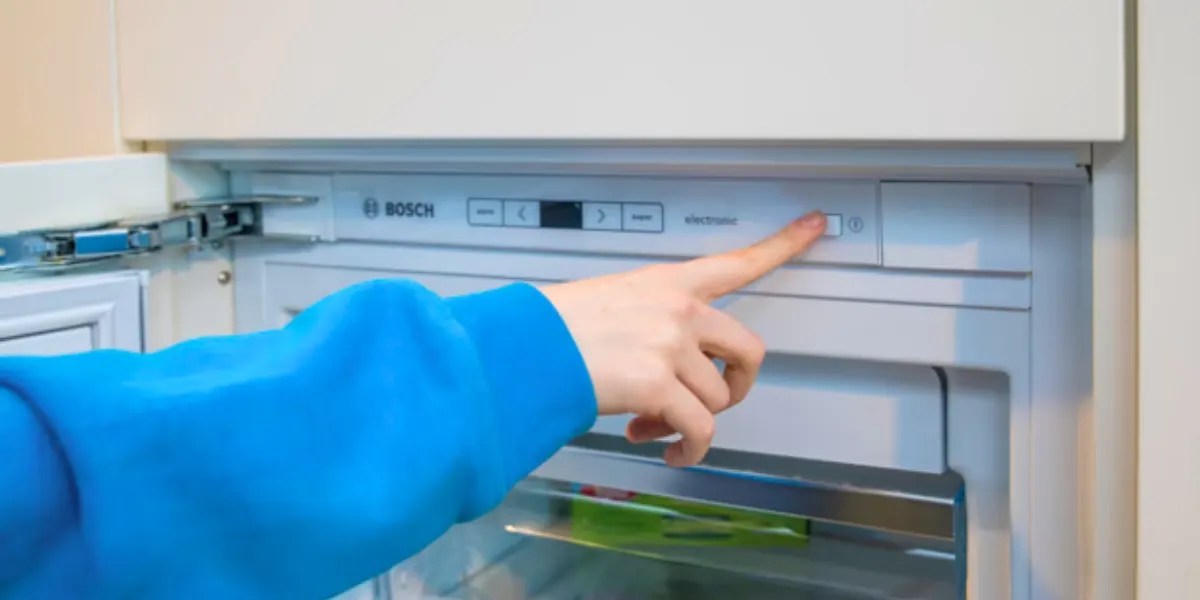
Should I turn off the refrigerator when cleaning?
Yes, it’s recommended to turn off your refrigerator when cleaning.
This ensures safety, prevents accidental spills, and allows for more thorough cleaning without any interference from the cooling system.
Benefits of Turning Off Your Refrigerator During Cleaning
1. Avoid Accidental Spills:
By turning off your refrigerator during cleaning, you eliminate the risk of accidental spills that can occur when removing food items or cleaning the interior.
This prevents liquids from seeping into electrical components and causing potential damage.
2. Ensure Safety:
Cleaning a refrigerator involves using water, cleaning agents, and possibly even removing shelves or drawers.
With the refrigerator turned off, you minimize the risk of electrical shocks or injuries that could occur if these tasks are performed while the appliance is powered on.
3. Thorough Cleaning:
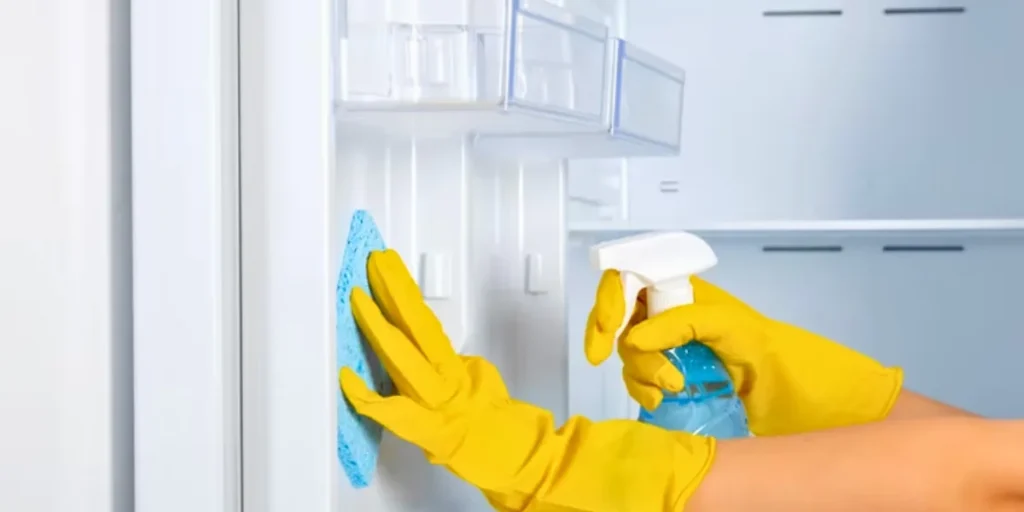
When the refrigerator is turned off, it allows you to clean every nook and cranny without any obstructions.
You can remove all the food items, shelves, and drawers, giving you unrestricted access to clean and sanitize the interior effectively.
4. Proper Drying:
After cleaning, it’s crucial to ensure that the refrigerator is completely dry before turning it back on.
By keeping the refrigerator off during the cleaning process, you can give it ample time to air dry, reducing the risk of mold or mildew growth.
5. Energy Efficiency:
By temporarily turning off your refrigerator, you conserve energy during the cleaning process.
This can lead to a reduction in energy consumption and contribute to environmental sustainability.
Precautions to Take When Cleaning a Refrigerator
By following these precautions and taking the necessary steps, you can ensure a thorough and safe cleaning experience for your refrigerator:
1. Remove all food items:
Start by taking out all the food items from your refrigerator. Place them in a cooler or another cold storage area to ensure they stay fresh while you clean.
2. Turn off and unplug the refrigerator:
Locate the power switch or unplug the refrigerator from the electrical outlet.
This step is crucial to ensure your safety and prevent any electrical accidents during the cleaning process.
3. Prepare cleaning solutions:
Prepare a mild cleaning solution by mixing warm water with a gentle detergent or a mixture of equal parts water and vinegar.
Avoid using harsh chemicals or abrasive cleaners that can damage the interior surfaces.
4. Clean the interior:
Use a soft cloth or sponge dipped in the cleaning solution to wipe down the interior surfaces of the refrigerator.
Pay close attention to shelves, drawers, and door compartments. Remove any spills, stains, or food residues.
5. Wash removable parts:
Take out shelves, drawers, and other removable parts and wash them separately with the cleaning solution.
Rinse them thoroughly with water and allow them to air dry before placing them back inside the refrigerator.
6. Clean the gasket:
The rubber seal around the refrigerator door, known as the gasket, can accumulate dirt and grime.
Wipe it down gently with a damp cloth to remove any debris. Make sure the gasket is completely dry before closing the door.
7. Defrost if necessary:
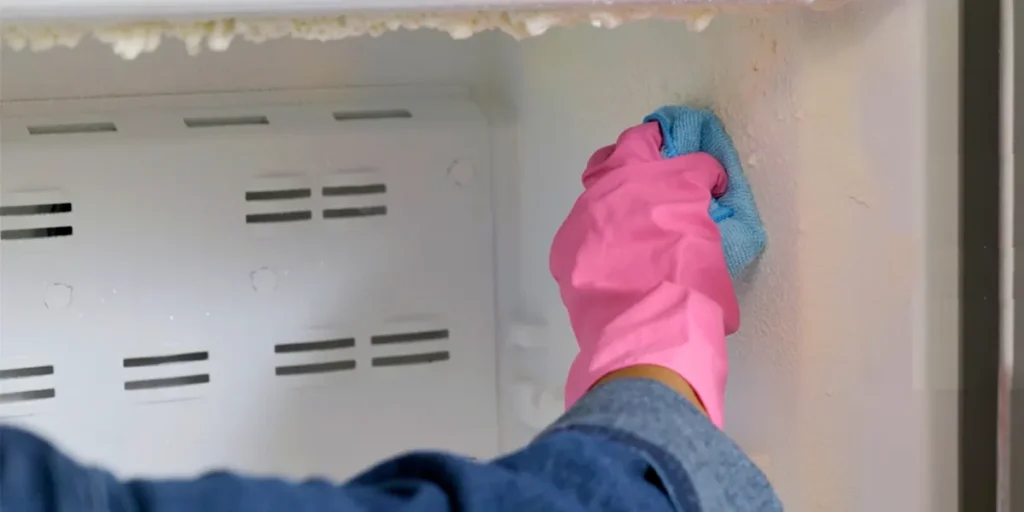
If your refrigerator has a built-in freezer, check if it needs defrosting. Follow the manufacturer’s instructions to defrost the freezer compartment before cleaning it.
8. Exterior cleaning:
Don’t forget to clean the exterior surfaces of your refrigerator. Wipe them down with a damp cloth and mild detergent. Dry thoroughly to avoid streaks or water spots.
9. Reorganize and restock:
Once you have completed the cleaning process and ensured that all parts are dry, it’s time to reorganize the refrigerator.
Place the food items back in an organized manner, discarding any expired or spoiled items.
10. Plug in and switch on:
Finally, plug in the refrigerator and switch it back on. Allow it some time to reach the desired temperature before placing perishable food items back inside.
Factors to Consider Before Turning Off Your Refrigerator
By carefully considering these factors, you can make an informed decision about whether or not to turn off your refrigerator during the cleaning process.
1. Check perishable items:
Before turning off your refrigerator, consider the perishable items inside. If you have highly perishable food that may spoil quickly, it’s best to consume or transfer them to another cold storage area to ensure its freshness and prevent wastage.
2. Plan the duration:
Determine how long you will be turning off your refrigerator. If it’s just for a short cleaning session, you may not need to worry about transferring perishable items.
However, for longer periods, it’s crucial to have alternative cooling arrangements in place.
3. External temperature:
Take into account the external temperature conditions. If you live in a hot climate or during the summer months, turning off the refrigerator for an extended period may lead to a faster increase in internal temperature.
Ensure you have a backup plan to keep your food safe and cool.
4. Energy-saving mode:
Some modern refrigerators come with an energy-saving or vacation mode feature. Explore your refrigerator’s settings and consider activating this mode during the cleaning process.
It helps reduce energy consumption while still maintaining a cool temperature inside.
5. Cleaning schedule:
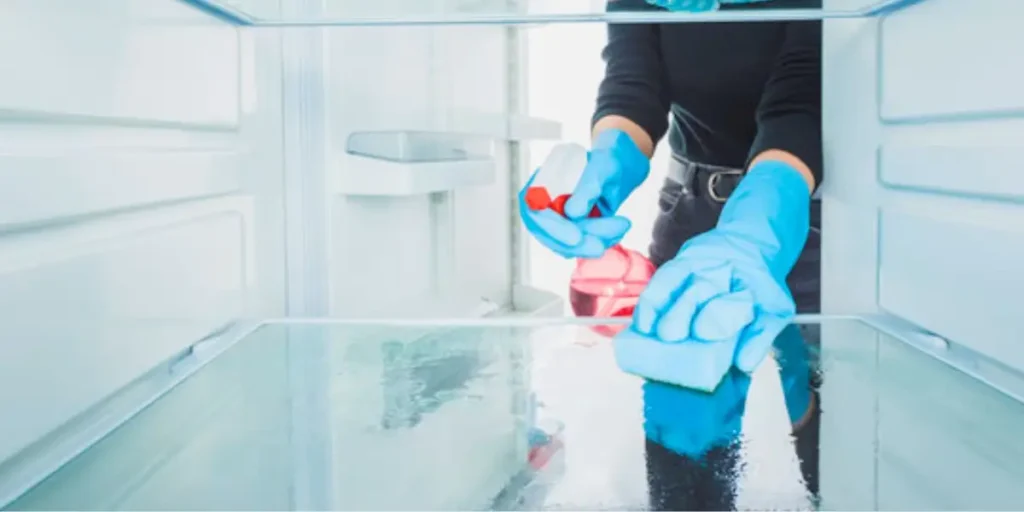
Plan your cleaning schedule to minimize disruption. If you decide to turn off your refrigerator, choose a time when you have fewer perishable items or when you can consume or transfer them conveniently.
6. Backup power source:
In case of a power outage during the cleaning process, have a backup power source like a generator or battery-operated cooler ready to ensure the safety of your food items.
7. Consult the manual:
Always refer to the manufacturer’s instructions and guidelines specific to your refrigerator model.
The manual may provide additional recommendations or precautions to consider before turning off your refrigerator.
Common Mistakes to Avoid When Cleaning Your Refrigerator
By avoiding these common mistakes, you can ensure a more effective and efficient cleaning process for your refrigerator:
1. Neglecting to unplug the refrigerator:
One common mistake is forgetting to unplug the refrigerator before starting the cleaning process.
Always ensure the appliance is disconnected from the power source to prevent electrical accidents or damage.
2. Using abrasive cleaners or tools:
Avoid using abrasive cleaners, harsh chemicals, or rough scrubbing tools when cleaning your refrigerator.
These can cause scratches or damage to the interior surfaces and finishes. Stick to gentle cleaning solutions and soft cloths or sponges.
3. Rushing the cleaning process:
Cleaning a refrigerator requires time and attention to detail. Rushing through the process may lead to incomplete cleaning or missing hidden areas that require attention. Take your time and be thorough in your cleaning efforts.
4. Not checking expiration dates:
Before returning food items to the refrigerator, always check their expiration dates. Neglecting this step can result in keeping expired or spoiled food, which can lead to odors and contamination.
5. Overloading the refrigerator:
Avoid overcrowding your refrigerator with too many items. Overloading restricts proper air circulation, making it harder for the appliance to maintain the desired temperature. Leave enough space between items to allow for efficient cooling.
6. Failing to clean the condenser coils:
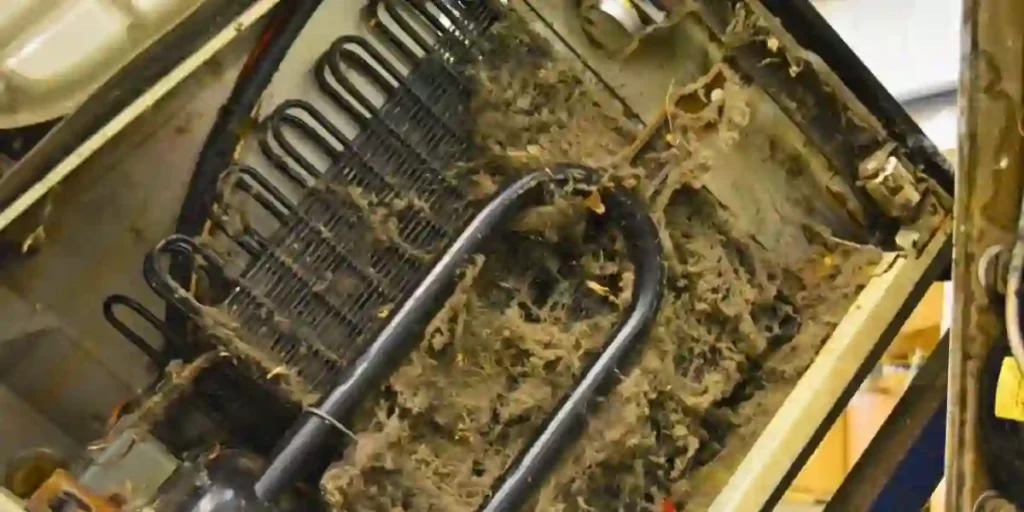
The condenser coils at the back or bottom of the refrigerator can accumulate dust and debris over time.
Neglecting to clean these coils regularly can reduce the refrigerator’s efficiency. Use a vacuum or soft brush to remove the buildup.
7. Skipping the door seals:
The rubber door seals, or gaskets, should not be overlooked during the cleaning process.
These seals can accumulate dirt and grime, affecting their effectiveness. Clean them regularly using a damp cloth to maintain a proper seal.
8. Not drying surfaces thoroughly:
After cleaning, make sure to dry all surfaces thoroughly before returning food items or reconnecting the power.
Moisture left behind can lead to mold or mildew growth, affecting both cleanliness and food safety.
9. Forgetting to clean the exterior:
While focusing on the interior, don’t forget to clean the exterior surfaces of your refrigerator.
Wipe down the door handles, control panel, and sides using a damp cloth and mild detergent. Dry them thoroughly for a polished look.
10. Ignoring regular maintenance:
Cleaning your refrigerator should be part of your regular maintenance routine. Neglecting routine cleaning and maintenance can lead to issues like odors, inefficient cooling, and decreased lifespan of the appliance.
Make it a habit to clean and maintain your refrigerator regularly.
FAQs
1. How Long Should I Turn Off The Refrigerator During Cleaning?
The duration of turning off the refrigerator depends on the cleaning process. If it’s a quick cleaning session, a few hours may be sufficient.
For deeper cleaning, consider transferring perishable items and turning them off for a longer period.
2. Can I Leave Perishable Items Inside The Refrigerator While Cleaning?
It is not recommended to leave perishable items inside the refrigerator during cleaning, especially for longer cleaning sessions.
Transfer them to an alternative cold storage area to maintain their freshness and safety.
3. Is There An Energy-Saving Mode I Can Use During Cleaning?
Check your refrigerator’s settings to see if it has an energy-saving or vacation mode.
Activating this mode during cleaning reduces energy consumption while keeping the interior temperature cool.
4. Are There Any Precautions I Should Take Before Turning Off The Refrigerator?
Before turning off the refrigerator, check the external temperature conditions, plan your cleaning schedule to minimize food disruption, and ensure you have a backup power source in case of a power outage.
5. Do I Need To Consult The User Manual Before Turning Off My Refrigerator?
Yes, it’s always a good idea to refer to the manufacturer’s instructions and guidelines specific to your refrigerator model.
The manual may provide additional recommendations or precautions to consider before turning off your refrigerator.
Conclusion
By turning off your refrigerator when cleaning, you ensure safety, prevent spills, and enable a thorough cleaning process.
Consider factors such as perishable items, external temperature, and energy-saving modes. Avoid common mistakes like neglecting to unplug or rushing the process.
By following these precautions, you can maintain a clean and efficient refrigerator, prolonging its lifespan and ensuring the freshness of your food.
Stay proactive and prioritize a well-maintained appliance for a healthy and hassle-free kitchen experience.
